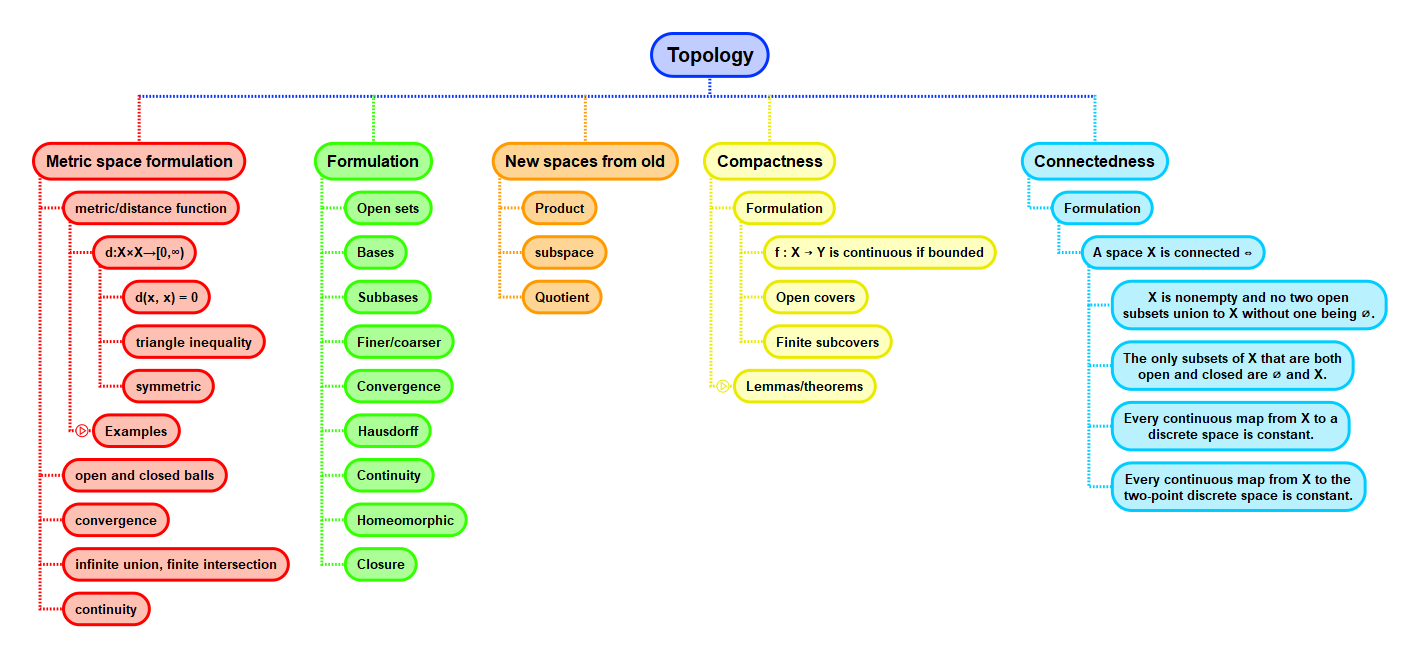Math and science::Topology
Connectedness. Equivalent formulations
For a nonempty topological space \( X \), the following are equivalent:
- \( X \) is connected;
- the only subsets that are both open and closed are \( \emptyset \) and \( X \);
- every continuous map from \( X \) to a discrete space is constant;
- every continuous map from \( X \) to the two-point discrete space is constant.
The 3rd and 4th statement are similar, yet both useful in their own right: the 3rd statement is general and allows progress to be made in a proof when one knows that \( X \) is connected. The 4th is powerful in the reverse direction: simply proving that all continuous maps to the two-point discrete space is constant is enough to show that \( X \) is connected.
Context

